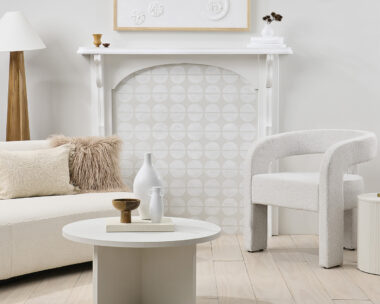There’s nothing nicer, in your own garden or someone else’s, than rounding a bend to find a surprise, be it a gnome with a fishing rod, a camellia covered in blooms, an old piece of costume jewellery woven into the bark of a tree, or anything that lifts your spirits or the corners of your mouth.

This rabbit adds a cute touch to a woodland area.
But it doesn’t happen nearly often enough, because in so many cases, the garden is styled to suit the architecture of the house, the planting is carefully orchestrated, and the elements of hard landscaping are logical and well constructed. Even the garden sculptures are meticulously placed, probably with a theodolight.
However, in exactly such a garden in Taranaki, I came across several garden delights, proving that the owners had a sense of humour, as well as a sense of style, and had taken ownership of their superbly designed outdoor spaces.

You could not fail to smile at this unique piece of garden sculpture – a classic in more ways than one.
The best was an Austin Cambridge car covered in ivy. The garden was classic and elegant – the car merely classic – but it elicited a smile from everyone who passed it. The owner was a car enthusiast with a garage full of collectibles, which gave the Austin a special relevance to the landscape.
We have lots of unexpected things in our garden, but they’re more in the nature of the moth plant which has colonised a pittosporum in the blink of an eye, and the proliferation of wild ginger hiding behind the bamboo on the boundary. Not something that is likely to lift the corners of our neighbour’s mouth, I fear.
I have, however, contrived a few surprises and, idiotic though it sounds, they surprise me even though I know they’re there. A year or so ago the Partner and I pushed a massive, cast iron grass roller into a corner of our native area. It seemed a lot easier than taking it to the tip.
A tree fern conveniently grew over it so it’s invisible unless you happen to walk around the back. Every time I do, I’m delighted to see it’s still there, and looks like a part of the landscape.
Creating surprises isn’t rocket science. How you do it depends on your sense of style, your budget, and your sense of humour. The easiest way is to find an item you like, whether it’s an old pot, a garden ornament or a decrepit garden seat, and create a space which will first camouflage, and then reveal it.
When you’re positioning a pot or a piece of garden art, tuck it partway into a hedge or shrub, or behind a piece of trellis or fencing. Create a depression in the ground alongside a path and sink a basin into it. Fill the bottom with coloured stones, shells or tumbled glass, and fill it with water. It’ll grab your attention every time you walk past.





